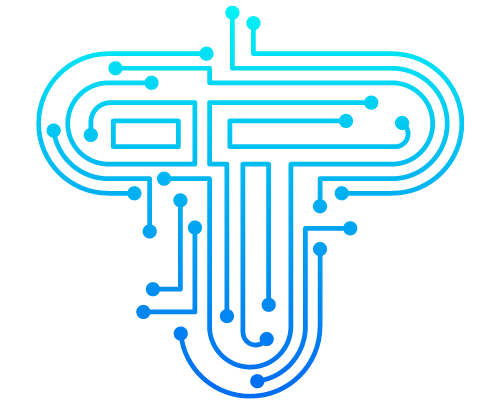Presentation
In a time where information breaks and protection concerns overwhelm titles, tech-driven arrangements are significant in reshaping how we approach information security. As computerized change speeds up, imaginative advances are arising to improve information security and protection. This article investigates the most recent progressions in tech-driven information security and analyzes the related difficulties that people and associations face.
Developments in Tech-Driven Information Protection
1. Advanced Encryption Technologies:
Encryption stays a foundation of information protection. Late progressions incorporate the advancement of quantum-safe encryption calculations intended to endure the future dangers presented by quantum registering. These calculations utilize numerical procedures that are impervious to the decoding abilities of quantum machines. Moreover, homomorphic encryption has gotten forward momentum, permitting information to be handled while still encoded, subsequently diminishing the gamble of openness during calculation.
2. Privacy-Upgrading Computation:
Protection upgrading calculation (PEC) procedures, for example, secure multi-party calculation (SMPC) and differential security, are altering the way in which delicate information is dealt with. SMPC permits different gatherings to cooperatively perform calculations on scrambled information without uncovering their confidential data sources. Differential protection, then again, adds factual clamor to datasets, guaranteeing individual information focuses stay undefined while as yet giving important bits of knowledge. These strategies are becoming essential to information investigation, offering powerful security assurances while working with information driven independent direction.
3. Zero-Information Proofs:
Zero-information evidences (ZKPs) are cryptographic strategies that permit one party to demonstrate to one more that they know a worth without uncovering the actual worth. This innovation has huge ramifications for confirmation and secure exchanges. For example, ZKPs can empower clients to demonstrate their character or access privileges without revealing delicate individual data, improving security in computerized communications.
4. Blockchain and Decentralized Personality Systems:
Blockchain innovation and decentralized character (DID) frameworks are rethinking information security by offering clients more prominent command over their own data. Blockchain’s unchanging record gives a straightforward and carefully designed technique for overseeing and checking exchanges. DID frameworks influence blockchain to make self-sovereign characters, where clients have unlimited authority over their own information and the way things are shared. These advances diminish dependence on concentrated specialists and relieve gambles related with information breaks and unapproved access.
5. AI and AI for Oddity Detection:
Computerized reasoning (simulated intelligence) and AI (ML) are progressively used to upgrade information security. Artificial intelligence driven abnormality identification frameworks can recognize uncommon examples or ways of behaving progressively, hailing potential security dangers before they raise. These frameworks are fundamental for proactive information assurance, assisting associations with answering breaks and weaknesses quickly.
Challenges in Tech-Driven Information Protection
1. Balancing Advancement with Privacy:
One of the essential difficulties is offsetting mechanical advancement with protection concerns. As new advances arise, they frequently present new vectors for potential protection breaks. For example, while computer based intelligence and AI improve security, they additionally require huge measures of information, raising worries about how this information is gathered, put away, and utilized. Finding some kind of harmony between utilizing innovation and keeping up with vigorous protection guidelines is a complex yet basic errand.
2.Regulatory Compliance:
Exploring the administrative scene is another huge test. With information security guidelines like the Overall Information Assurance Guideline (GDPR) in Europe and the California Customer Protection Act (CCPA) in the U.S., associations should guarantee consistence while executing tech-driven arrangements. Guidelines frequently linger behind innovative progressions, making a hole between lawful necessities and arising advances. Remaining agreeable while taking on new protection upgrading innovations requires persistent watchfulness and variation.
3. Integration and Interoperability:
Coordinating new security advancements with existing frameworks can challenge. Numerous associations use inheritance frameworks that may not be viable with the most recent protection upgrading innovations. Guaranteeing interoperability between various frameworks and advancements while keeping up with security and protection norms requires cautious preparation and execution.
4. User Mindfulness and Education:
Indeed, even with cutting edge innovations, client mindfulness and training are pivotal for powerful information security. Numerous clients know nothing about how their information is gathered, utilized, and safeguarded. Advancing straightforwardness and teaching clients about their information security freedoms and the advancements set up to safeguard them can improve entrust and guarantee better consistence with protection rehearses.
5. Evolving Danger Landscape:
The danger scene for information security is consistently advancing, with cybercriminals growing progressively complex strategies to take advantage of weaknesses. As tech-driven security arrangements advance, so do the strategies utilized by aggressors. Staying up with arising dangers and constantly refreshing security advances is fundamental for keeping up with information insurance.
End
Tech-driven developments in information security offer huge enhancements in safeguarding touchy data and upgrading client control. From cutting edge encryption and protection upgrading calculation to blockchain and simulated intelligence driven safety efforts, these innovations are reshaping the scene of information security. Notwithstanding, difficulties, for example, offsetting advancement with security, administrative consistence, mix issues, client schooling, and developing dangers should be addressed to guarantee compelling and thorough information insurance.
As associations and people explore the intricacies of tech-driven information protection, remaining informed about the most recent progressions and effectively tending to related difficulties will be pivotal. By embracing creative innovations while staying cautious about expected chances, we can all the more likely defend our computerized lives and cultivate a safer and protection cognizant future.
